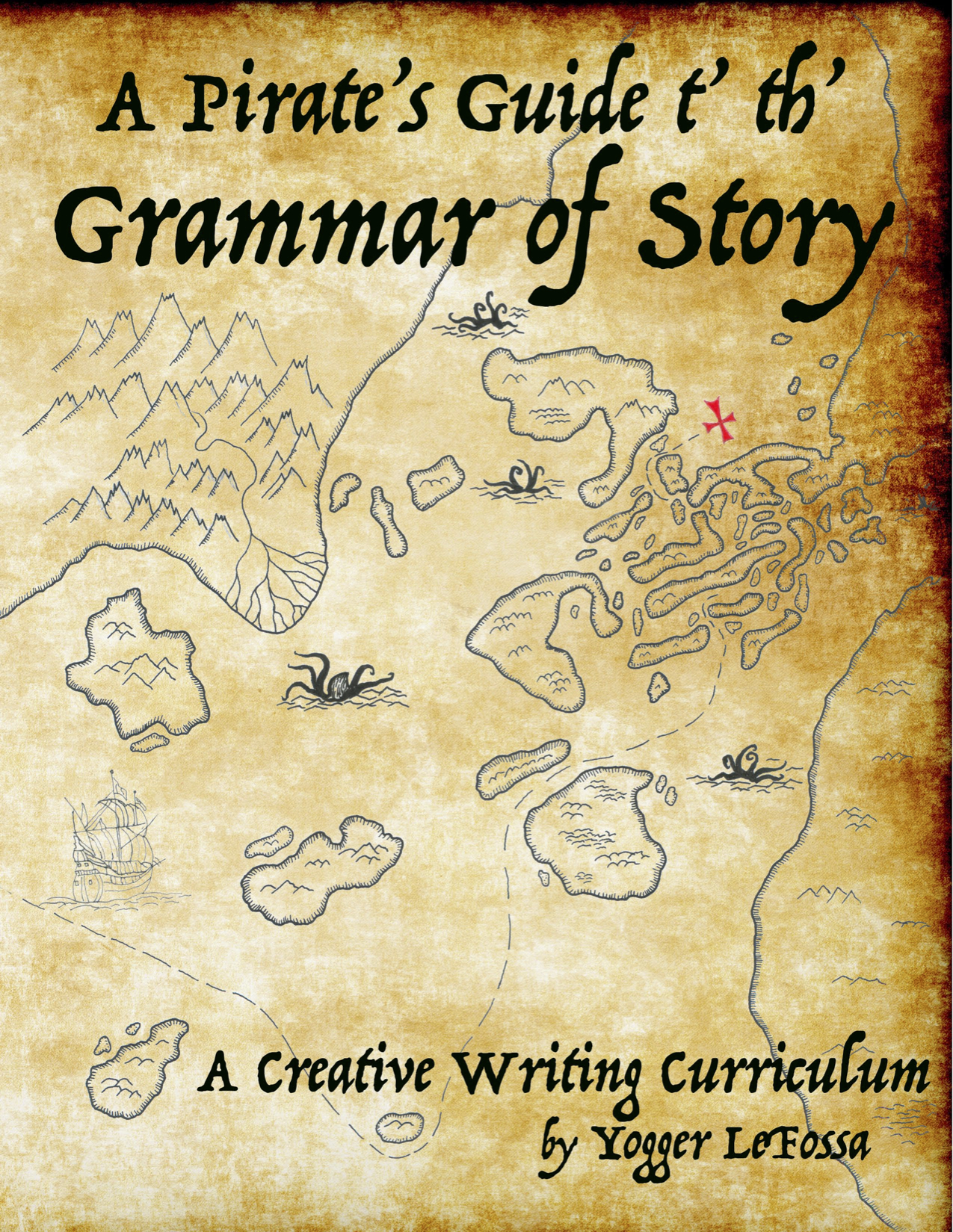The Grammar of Story
At the same time, we’ve got a pirate story that is woven in and throughout these exercises. The story is about a notorious pirate named Captain Yogger LeFossa, who captures your child and brings them aboard his ship and invites them to go on a treasure hunt, where x marks the spot. The story weaves in and out of the exercises, and the exercises themselves are involving your child in this larger pirate quest. It was done simply to make creative writing fun and interesting, and also to demonstrate these elements of story through the fictional story of these pirates, its crew of talking monkeys, and their adventures.
For a quick overview of how this workbook works, you can watch our 2 minute video flip through here.
As you can see, the exercises are directive - asking the student for specific responses, something they can easily do. Then the exercises build on each other, adding to what they’ve done before, and in the end, creating a lot of raw material for stories that you student would want to tell.
As Chris designed the curriculum, he drew not only on our experiences as homeschooling parents, but on those of the parents we interacted with in our coop groups. We didn’t want this book to be teacher intensive, but something a parent could hand to their child and have their child do. It does not intimidate, or require a lot of background or explanation, and there isn’t even a big teacher’s guide (though, after many requests for one, we’ve published one here). Instead, he designed it to be easy to use, very intuitive, and a workbook you could simply open up and start to work within. As a result, it’s something that parents and their kids can do along side each other (time permitting) - you don’t have to be teaching this. It can be a journey that the two of you can go on together. Ultimately, the goal was for this subject to be FUN. Because we believe that if you can get kids to enjoy writing, and engage with it, then they will continue to want to write.
The GRAMMAR of Story
So what on earth is the Grammar of Story?
In case you haven’t noticed yet, A Pirate’s Guide t’ th’ Grammar of Story is not about grammar as you probably think of it. While we may reference nouns, verbs, and adjectives from time to time, this is not about learning the parts of speech, or diagramming sentences, or anything that make us think of “English class.” Instead, the grammar in A Pirate’s Guide is the first of the classical stages of learning: Grammar, Logic, Rhetoric. In the Grammar stage, students learn the tools of the subject. Complex material is reduced to its basic elements and the goal is both exposure, understanding, and recall. In the Logic stage, students develop a deeper understanding of the basic elements they learned in the Grammar stage. This is when they begin to play with the tools, to see how they work, what they do. In the Rhetoric stage, students analyze what they’ve already learned, and begin to make it their own.
This means that before we write a full story (the logic and especially rhetoric stages), we need to know the basics (or grammar) of Story. The grammar of piano is scales. The grammar of baseball are the rules and regulations. The grammar of a doctor is basic anatomy and biology. And the Grammar of Story includes all the elements that make up a story. Just as a song is made up of various musical notes, a story is made up of various story elements. Learning what the elements are and how they function allows a storyteller (of any age!) to use the tools they need to more easily tell the stories they have to tell.
A Pirate’s Guide t’ th’ Grammar of Story gives your student a primer to these essential elements, and helps them play around with those elements until they are natural. Then, when they go to write a story, they are writing from their strengths!
